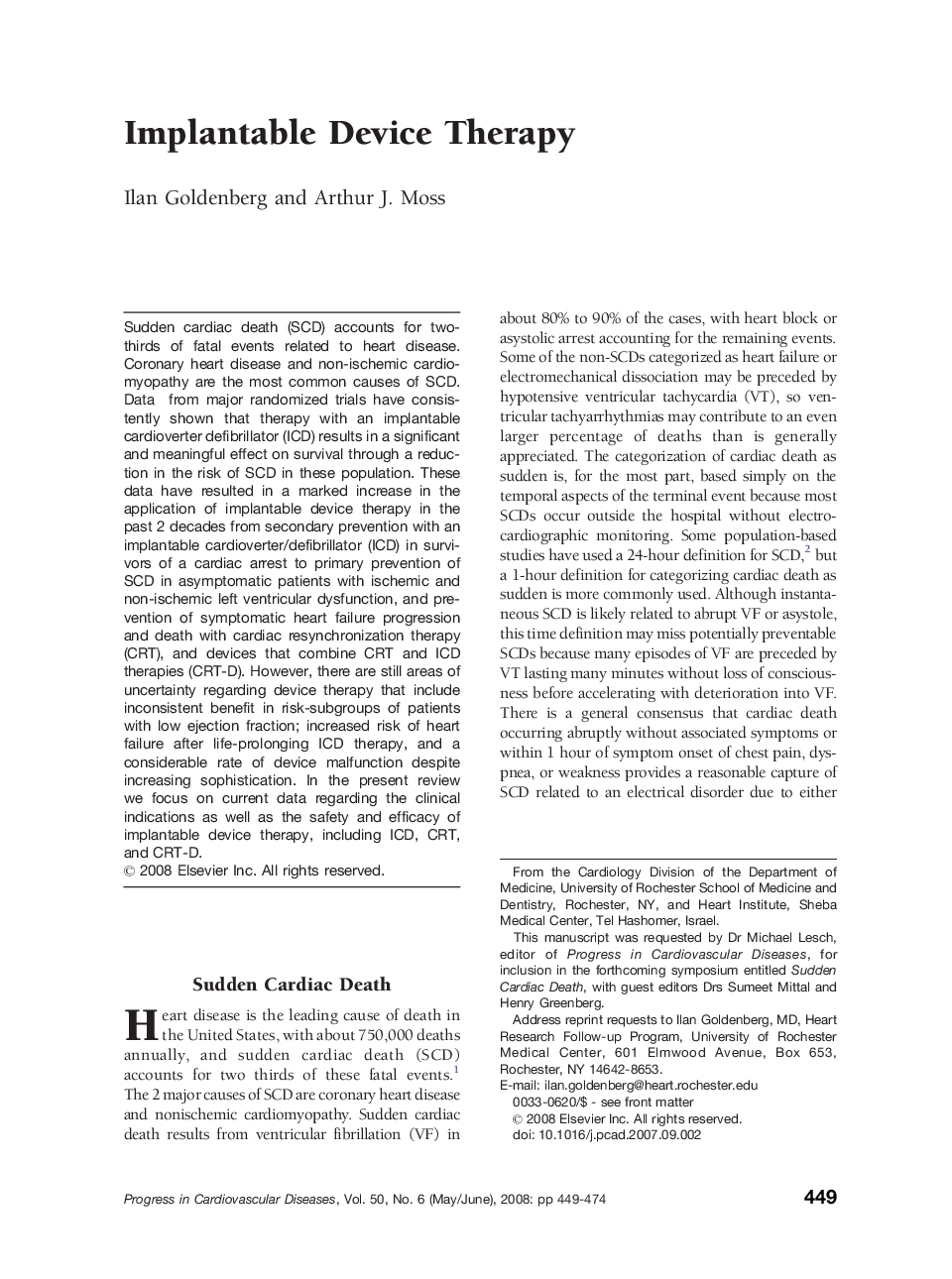| Article ID | Journal | Published Year | Pages | File Type |
|---|---|---|---|---|
| 3006796 | Progress in Cardiovascular Diseases | 2008 | 26 Pages |
Sudden cardiac death (SCD) accounts for two-thirds of fatal events related to heart disease. Coronary heart disease and non-ischemic cardiomyopathy are the most common causes of SCD. Data from major randomized trials have consistently shown that therapy with an implantable cardioverter defibrillator (ICD) results in a significant and meaningful effect on survival through a reduction in the risk of SCD in these population. These data have resulted in a marked increase in the application of implantable device therapy in the past 2 decades from secondary prevention with an implantable cardioverter/defibrillator (ICD) in survivors of a cardiac arrest to primary prevention of SCD in asymptomatic patients with ischemic and non-ischemic left ventricular dysfunction, and prevention of symptomatic heart failure progression and death with cardiac resynchronization therapy (CRT), and devices that combine CRT and ICD therapies (CRT-D). However, there are still areas of uncertainty regarding device therapy that include inconsistent benefit in risk-subgroups of patients with low ejection fraction; increased risk of heart failure after life-prolonging ICD therapy, and a considerable rate of device malfunction despite increasing sophistication. In the present review we focus on current data regarding the clinical indications as well as the safety and efficacy of implantable device therapy, including ICD, CRT, and CRT-D.
